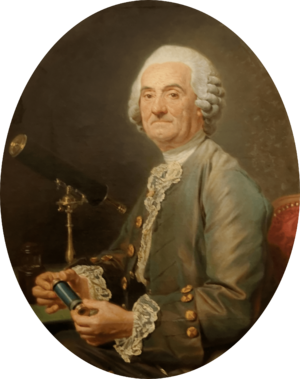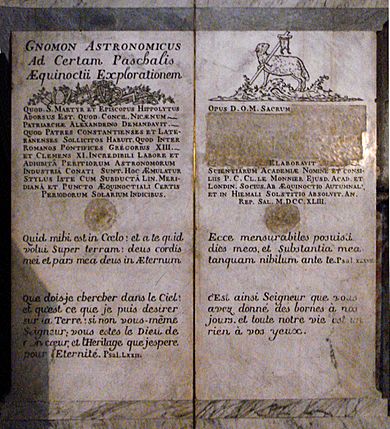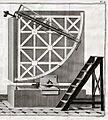Pierre Charles Le Monnier facts for kids
Pierre Charles Le Monnier (born November 23, 1715 – died April 3, 1799) was a famous French astronomer. Sometimes his name is spelled Lemonnier. He made many important discoveries and helped improve how astronomy was done in France.
Contents
About His Life
Pierre Charles Le Monnier was born in Paris. His father, Pierre, was also an astronomer and a professor.
Pierre Charles started observing the stars and planets before he was 16 years old. He even created a detailed map of the Moon! Because of his amazing talent, he was accepted into the French Academy of Sciences when he was just 20.
Measuring the Earth
In the same year, 1736, he joined a special trip to Torne Valley in Lapland. On this trip, scientists like Pierre Louis Maupertuis and Alexis Clairaut were trying to measure a part of the Earth. This helped them figure out the exact shape of our planet. When he came back in 1738, he shared new ideas about how to measure star positions more accurately.
New Ways of Doing Astronomy
Le Monnier really liked the methods and tools used by British astronomers. He worked hard to bring these new ideas to France. This was one of his biggest contributions to science! He talked with famous British astronomers like James Bradley. He also helped introduce a new tool called the transit-instrument at the Paris Observatory in 1741. In 1748, he visited England and Scotland to observe a special annular eclipse of the Sun.
Discoveries and Observations
The King of France, Louis XV of France, really liked Le Monnier. The King gave him money to buy the best astronomical instruments, many of them from Britain. With these tools, Le Monnier did a lot of important work:
- He studied how the planets Jupiter and Saturn affected each other.
- He observed the Moon for over 50 years!
- He researched terrestrial magnetism (the Earth's magnetic field) and atmospheric electricity (like lightning). He even noticed that atmospheric electricity changed during the day.
- He carefully recorded the positions of many stars. He even observed the planet Uranus at least twelve times between 1750 and 1771, long before it was officially recognized as a planet!
Le Monnier also taught at the Collège de France. He was one of the first to explain the math behind gravitation (the force that pulls things together). He also helped Jérôme Lalande, who became another important astronomer.
Later Life and Legacy
Le Monnier's career ended in 1791 when he became ill. He passed away in 1799. He was a member of important scientific groups, including the Royal Society and the Prussian Academy of Sciences.
Today, a crater on the Moon is named after him to honor his contributions to astronomy.
His Books and Works
Le Monnier wrote several important books and published his observations:
- Histoire céleste (1741) - This means "Celestial History."
- Théorie des comètes (1743) - "Theory of Comets." This was a translation of another astronomer's work, with his own additions.
- Institutions astronomiques (1746) - "Astronomical Institutions." This was an improved translation of a textbook.
- Nouveau zodiaque (1755) - "New Zodiac."
- Observations de la lune, du soleil, et des étoiles fixes (1751–1775) - "Observations of the Moon, Sun, and Fixed Stars." These were his detailed records.
- Lois du magnétisme (1776–1778) - "Laws of Magnetism."
Images for kids
-
Astronomical quarter-circle wall quadrant built by John Bird. Le Monnier used a similar version in 1774.




